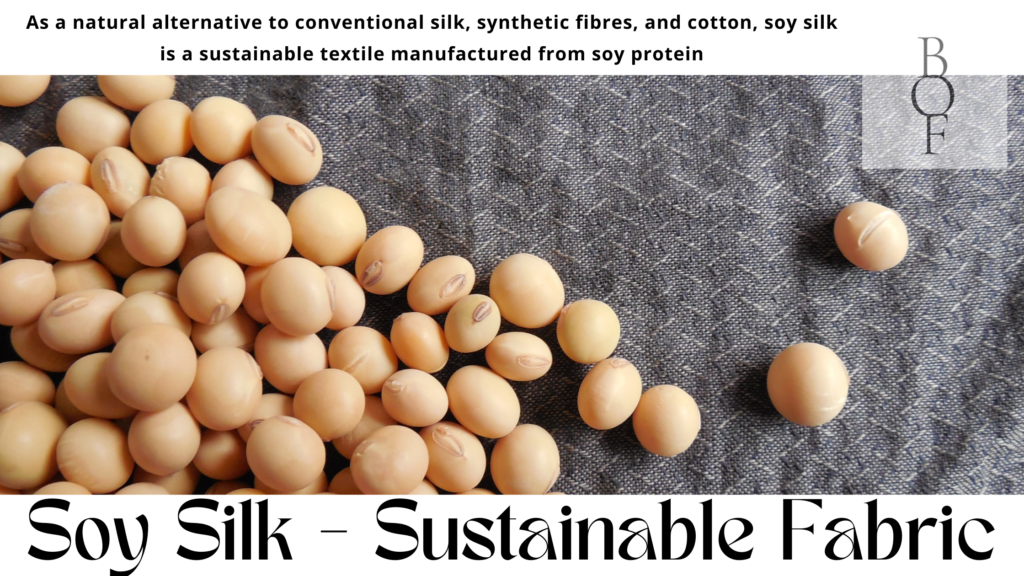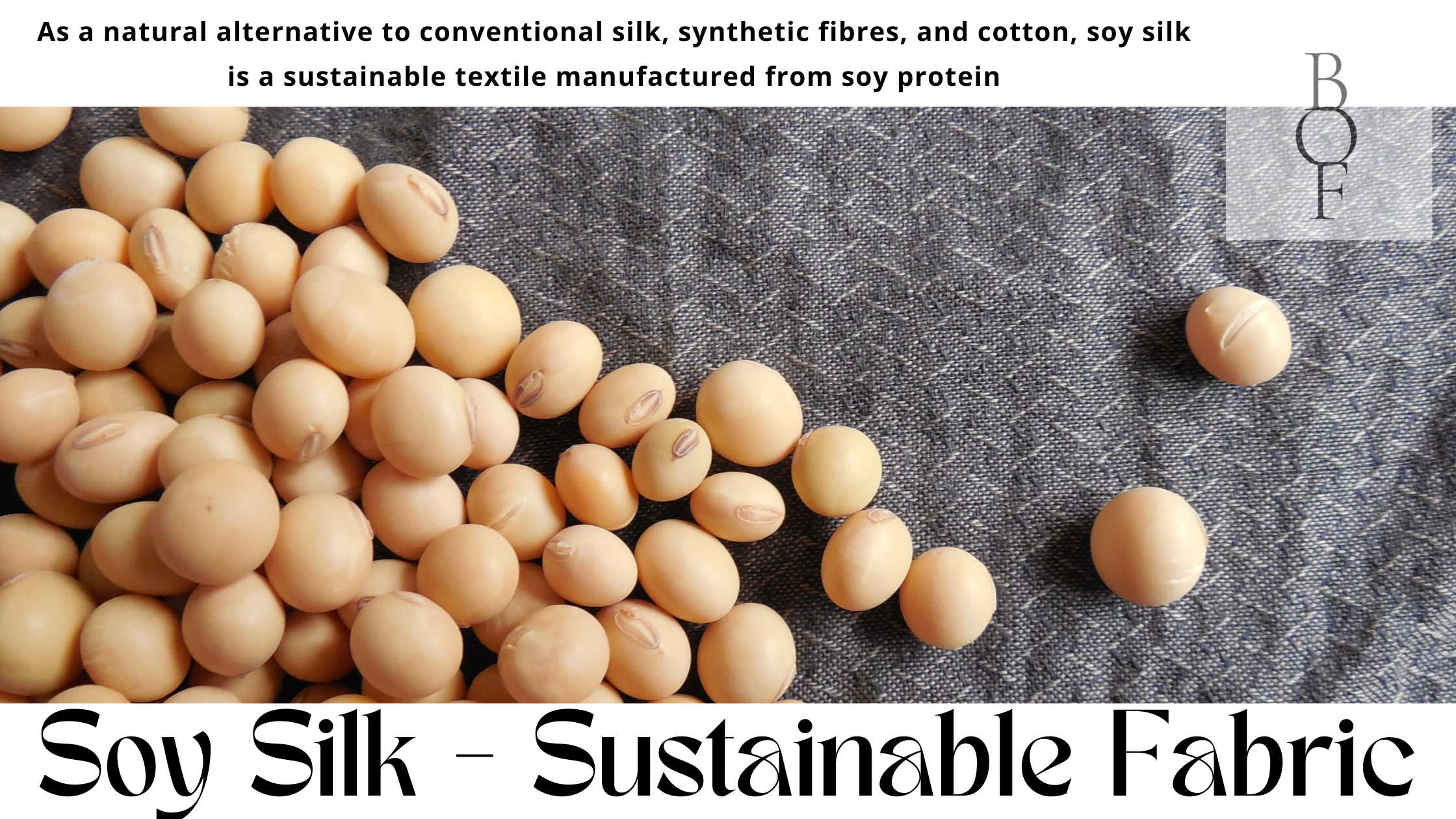
Soy silk, also known as soy bean fiber, is a type of textile made from the protein fibers of soybeans. These fibers are obtained through a process known as “wet spinning,” which involves extracting the protein from the soybeans, spinning it into fibers, and then weaving or knitting it into a fabric.
The history of soy silk can be traced back to the early 20th century, when researchers in Japan and China first began experimenting with using soy protein as a source of textile fibers. However, it wasn’t until the 1990s that the process of wet spinning soy protein into fibers was developed, and soy silk began to be produced on a commercial scale.
The sustainability of soy silk is one of its main benefits. In comparison to many other crops, soybeans are a renewable resource that require less water and pesticides to grow. The manufacturing of soy silk also produces fewer carbon emissions than that of conventional silk or synthetic fibres.
Soy silk can be used for a variety of purposes, such as:
- Clothing: Soy silk is soft, lightweight, and drapes well, making it a great choice for clothing such as blouses, dresses and pants.
- Home Textiles: Soy silk can be used for pillows, bedding, and upholstery.
- Medical Textile: It also has potential in medical textile because of its antibacterial properties.
- Industrial use: It is also being used as a component in paper and insulation products.
As a natural alternative to conventional silk, synthetic fibres, and cotton, soy silk is a sustainable textile manufactured from soy protein. Due to its recent development and growing popularity in the textile sector, it offers a variety of uses and is eco-friendly. Clothing made of soy silk will last a very long time and feel soft and comfortable on the skin with proper care.
Care Instructions
Caring for soy silk is similar to caring for other natural fibers like cotton or linen. To ensure that your soy silk fabrics last as long as possible and maintain their softness and color, here are some care instructions you should follow:
- Hand wash or machine wash soy silk in cool water using a gentle cycle and mild detergent. Avoid using bleach or fabric softeners, as these can damage the fibers and reduce the fabric’s softness.
- Do not wring or twist soy silk fabrics when removing excess water. Instead, gently press the fabric between two towels to remove any moisture.
- Hang dry soy silk fabrics or lay them flat to dry. Avoid tumble drying or exposing the fabric to direct sunlight, as the heat and UV rays can cause discoloration.
- Iron soy silk fabrics on a low heat setting, if needed. Avoid using steam when ironing soy silk fabrics as this can damage the fibers.
- Avoid using harsh chemicals or abrasive cleaning agents on soy silk fabrics. This can damage the fibers and reduce the fabric’s softness.
- When not in use, store soy silk fabrics in a cool, dry place, away from direct sunlight and heat sources.
- If you need to remove stains or spills, it’s best to treat them as soon as possible. Use mild detergents and cool water to spot-clean the affected area, and then follow the general care instructions outlined above.
By following these care instructions, you’ll be able to enjoy the softness and durability of soy silk fabrics for a long time to come. Always check the care label on your soy silk garments for specific instructions on how to care for it. With proper care, soy silk fabrics can last for many years and will remain soft and comfortable.










